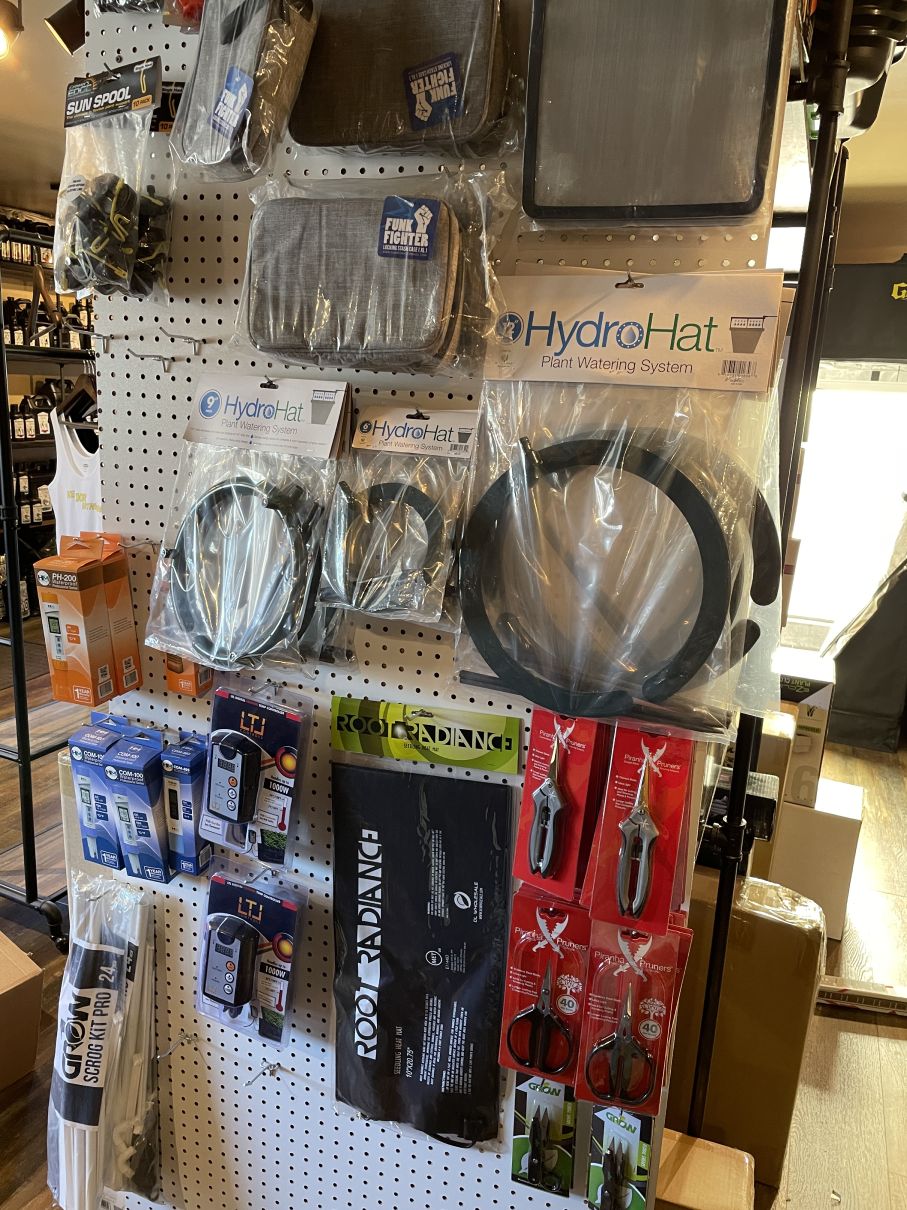Dive Into the Globe of Hydroponics: Discovering Various Types
Within the world of hydroponics lies a diverse array of farming methods that offer distinct benefits for expanding plants without soil. As we get started on this expedition of different hydroponic systems, we will certainly discover the details of methods like the Nutrient Film Method (NFT), Deep Water Culture (DWC), Wick System, Ebb and Circulation (Flooding and Drainpipe), and Aeroponics. Each method presents a distinct approach to nurturing plants in a soil-less environment, encouraging advancement and efficiency in the realm of modern farming.

The Nutrient Film Strategy (NFT)
The Nutrient Movie Method (NFT) is a hydroponic system that involves a constant flow of nutrient service over plant roots in a slim film to promote reliable nutrient uptake. This technique uses a superficial stream of water which contains liquified nutrients, permitting the plant roots to have continuous accessibility to the necessary elements for development - The Indoor Earthworm. The nutrient remedy streams along the bottom of the network, calling the origins and after that draining away, providing an extremely oxygenated setting crucial for root health and wellness
One of the primary advantages of the NFT system is its water performance. Because the nutrient service is recirculated, it needs less water contrasted to typical soil-based horticulture. Additionally, the regulated setting of the NFT system minimizes the danger of nutrient inequalities and illness, bring about much healthier plants. However, this technique requires careful tracking of pH levels and nutrient concentrations to make certain ideal plant growth. Overall, the Nutrient Movie Method is a popular option amongst hydroponic fanatics as a result of its simpleness, effectiveness, and space-saving style.
Deep Water Society (DWC)
Amongst the numerous hydroponic systems made use of for cultivating plants, Deep Water Society (DWC) sticks out for its easy yet efficient style. In a DWC system, plants are positioned in net pots, enabling their roots to dangle directly into a nutrient service. This solution is oxygenated using air pumps and air stones to make certain that origins receive an appropriate oxygen supply. The key to success in DWC is preserving the appropriate oxygen degrees in the nutrient service to stop root rot and promote healthy and balanced plant development.
One of the main benefits of DWC is its low maintenance needs. With fewer relocating components and no requirement for a complex watering routine, DWC is a beginner-friendly option for those brand-new to hydroponic gardening. In addition, the straight access to oxygen and nutrients allows plants to uptake what they need a lot more effectively, usually causing faster growth prices and greater yields compared to conventional soil farming techniques. Nonetheless, managing water temperature level and avoiding algae development in the nutrient solution are critical factors to consider when implementing a DWC system.
Wick System
In hydroponic farming, the Wick System is a passive approach that allows plants to draw up nutrient remedy through capillary action. The capillary action of the wick permits the nutrient option to relocate from the reservoir to the expanding tray, making sure a consistent supply of nutrients to the plants' origins. It may not be ideal for bigger plants or those with high nutrient needs, as the easy nature of the system can lead to uneven vitamins and mineral circulation.
Ebb and Circulation (Flooding and Drain)
Checking Out the Ebb and Circulation (Flood and Drainpipe) system offers insight right into a vibrant hydroponic method that alternates in between flooding and draining pipes the plant roots with nutrient solution. This system operates by periodically swamping the plant containers with a nutrient option from a reservoir and after that allowing the excess remedy to drain pipes back. The process is commonly regulated by a timer to make sure routine flooding cycles, offering the roots with oxygen as the solution recedes.
Ebb and Circulation systems are functional and can go to the website fit numerous plant dimensions and kinds. The routine flooding assists supply nutrients directly to the roots, boosting nutrient uptake effectiveness.
This method is prominent amongst hydroponic enthusiasts for its simpleness, efficiency, and flexibility to different plant needs. With correct monitoring and maintenance, the Ebb and Circulation system can sustain robust plant development in a controlled hydroponic atmosphere.
Aeroponics
Using a high-pressure misting system, Aeroponics is a sophisticated hydroponic approach that suspends plant roots in an oxygen-rich environment to promote optimum nutrient absorption and vigorous development. Unlike various other hydroponic techniques, which immerse origins in water or a nutrient solution, Aeroponics delivers nutrients directly to the origins via a great mist. This mist is splashed at normal see this periods, guaranteeing that the roots get a constant supply of water, oxygen, and nutrients.

Among the key advantages of Aeroponics is its capability to make the most of nutrient uptake while minimizing water use. By providing nutrients straight to the roots, plants can absorb them a lot more successfully, bring about faster development rates and higher returns. Additionally, the oxygen-rich setting developed by the misting system promotes origin growth and aids protect against origin conditions.
Aeroponics is particularly fit for growing leafy eco-friendlies, natural herbs, and various other plants that grow in aerated settings. The Indoor Earthworm. Its efficient use sources and ability to advertise quick development make it a popular option for hydroponic enthusiasts looking to attain ideal results
Conclusion
In conclusion, hydroponics provides a series of innovative strategies for expanding plants without dirt. From the nutrient movie technique to deep water society, each approach has its very own benefits and difficulties. By recognizing and making use of these numerous kinds of hydroponic systems, people can check out new opportunities for sustainable farming and make the most of plant development in regulated atmospheres.
